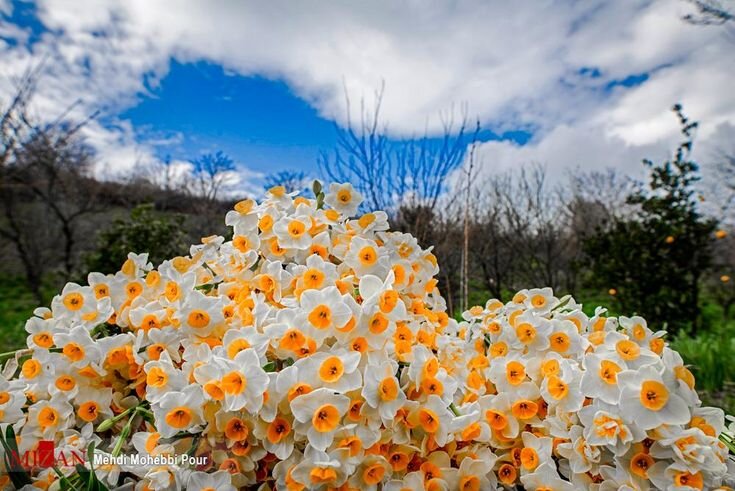Old trees, daffodil fields made national heritage

TEHRAN—A selection of nine natural properties across the southern province of Fars has recently been inscribed on the national heritage list.
The Ministry of Cultural Heritage, Tourism, and Handicrafts announced the inscriptions on Wednesday in a letter to the governor-general of the province, Mehr reported.
Old plane and pistacia trees as well as two daffodil fields were among the properties added to the prestigious list.
In Persian culture and literature, the daffodil symbolizes the eye, usually the eye of the beloved. In poetry, the beloved is likened to the daffodil because of its leafless and green stem, which is hollowed out, straw-like, and curved, which is associated with humility and dignity.
The daffodil is a perennial and grows to about 41 cm in height. Each plant features five or six linear leaves that grow from the bulb and are about 30 cm long. The stem bears one large yellow blossom with a corolla deeply cleft into six lobes and a central bell-shaped crown that is frilled at its edges. This trumpet shape contains stamens and is the flower’s most conspicuous feature.
The ancient region of Fars also spelled Pars, or Persis, was the heart of the Achaemenid Empire (550–330 BC), which was founded by Cyrus the Great and had its capital at Pasargadae. Darius I the Great moved the capital to nearby Persepolis in the late 6th or early 5th century BC.
The capital city of Shiraz is home to some of the country’s most magnificent buildings and sights. Increasingly, it draws more and more foreign and domestic sightseers flocking to this provincial capital, which was the literary capital of Persia during the Zand dynasty from 1751 to 1794.
Having an opulent tourist circuit with 26 UNESCO World Heritage sites, of which the vast Hyrcanian Forest and Lut Desert are among the natural properties, Iran seeks to acquire a greater share of the global tourism industry by 2025.
ABU/AM
